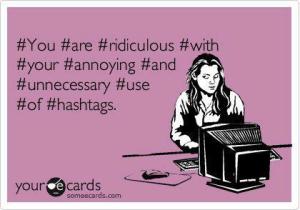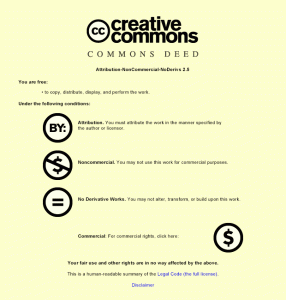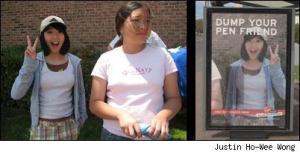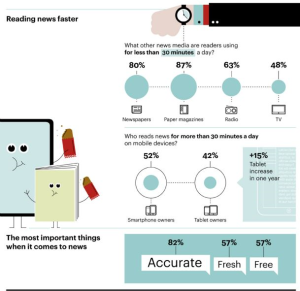Blog 6
Late Night with Jimmy Fallon created a skit with Justin Timberlake, parodying the current tagging trend through hyperbolic comedic interpretation of how this trend has gone too far. In the clip, the two entertainers take the virtual tags that aggregate data and make fun of the tag-crazy or metatagging culture that has exploded since Twitter, Instagram and more recently, Facebook, which introduced hashtags buy incorporating it into spoken sentences of the real world.
Indeed there are examples of people’s overuse of hashtagging, which begs the question – are people are trying to make their content more searchable and trackable or, are they are simply in the adolescent internet life stage and their overuse of it is the online version of teen over-reactions?
Tagging, metadata and it’s implication on algorithms and ultimately search results does impact which content is features at the top of searches, and therefore influences public discourse and the overall news agenda. We can and should think about the implication on language, cultural exchange and identity. A cute article written by Ad Age took a look into the life of a 10 year old without Facebook and Twitter. Berkowitz found that it was still an overwhelming connected social life with expectations around the mobile media device to shape their language, culture and identity. In contrast, Ashton points our that “today computers—and, therefore, the Internet—are almost wholly dependent on human beings for information” (That ‘Internet of Things’ Thing, 2009).
So it seems that society continues to struggle between who is in control – the humans or the technology, and whether the collection of data will support people’s development and information needs – or be run by it.
Another concerning trend in metadata is the two pronged consequences surrounding content, whereby –
1) the first acknowledges the destabilising privacy expectations around increased collection of personal information that is being stored in cyberspace for eternity;
2) and the second concern is the ability to search anonymously and the pros and cons of maintaining that luxury.
In this week’s reading, Stross similarly echoes these key issues, “as the online world has expanded exponentially and the amount of personal information collected online has grown apace, users have watched with queasiness as one company after another, whether accidentally or intentionally, has released information that users regards as personal or private” (The Algorithm 2008, p 63).
The reason attention is given to this concern is because technology is seeming to compete with the values of our community. The over-intuitive internet and unintentional acceptance of unread terms of service by many users in order to tap into the information system such as the “I accept” and “I agree” buttons we click each day is a poignant reflection of the speed of progress, that will leave a trail of mistakes that cannot be undone until it is too late.
Online users signing away content rights to corporations and leaving themselves vulnerable to hackers is a big issue, especially as our online usage patterns become predictable, searchable and algorithmic. Cracked wrote an article titled “6 Terrifying User Agreements you’ve Probably Accepted” which illustrates this bubbling feature. However, the homoginisation of people’s interests and search queries and other information can be in intimidating, it is not all bad!
Business are not the only beneficiaries of hashtags and information aggregation. High quality, instant and relevant information is the best way to combat a sense of loss of control or privacy in an algorithmic digital age. Munjin (2011) talks about the empowerment of the end users, as someone that is not simply a passive consumer but rather involved in the commercial, user experience and social shaping of the web, and how we interact with it.
In conclusion, hashtags, short-hand communication, algorithyms and the searchability of all this metadata is produced by people for people. It can seem like the internet gets away from us at times or overtakes our lives and language (as Justin and Jimmy shows us), however a dystopian view of the world is neither productive nor truthful. We must not ignore the changes to society or potential dangers of irresponsible and adolescent internet use, however the control is ours and the journey to organise information online is still at an early stage of discovery, where we must remain patient and faithful.
This week, our reading by Aigrain (2005) titled ‘Positive Intellectual Rights and Information Exchange’, focused on the model of “positive intellectual rights”, that is, proactive rather than protectionist motivations around content. Many content-focused debated tend to be around “10 Ways to Help Protect Your Blog From Content Theft” and rarely do I see a blog that advocate “10 Ways to Make It Super Easy To Share Your Ideas and Make The World A Better Place”. This seems so contrary in the context of a world where ‘creative commons‘ is alive and well and the Pirate Party is increasing in popularity.
Lawrence Lessig who is one of the founders of Creative Commons gave a interesting talk at TEDxNYED about remix culture, where he emphasises the need to protect ideas around “fair use” to enable innovation. However he also strongly states that there needs to be a respect for the original creator and laws that support this but also an open ecology of content sharing.
However with sharing, a loss of control over where and how your content is used can be expected and is not addressed by Lessig, which I would argue, is the more poignant and topical issue at hand. Allison Chang was one of the first and certainly most high profile cases of a teen’s picture being used by Virgin Mobile Australia in a billboard advert campaign.
The girl’s image was taken from Flickr, and she and her family claimed misappropriate use, damage of reputation but did not and could not claim that is was illegally obtained. The reason for this is because all content uploaded to Flickr provides the user a choice about how they would like their image to be shared and in this case, she an attributions 2.0 license to it. In the end, the case was dismissed, as the licence only addresses the creator’s copyright and not publicity or privacy rights, which should be addressed in the type of license and image is granted.
Aigrain says “the information age is by no means something that is already defined” (2005, pg 290) and this is exciting. We need to maintain an incentive for people to create, rather than overwhelm people with restrictions, but something tells me that despite these rules, we either don’t care or don’t understand – and this is exemplified in the proliferation of the selfie-culture. Chang didn’t take that picture of herself and in fact, looks a little bit surprised, and yet it was used in a very public way. But of those that deliberately take images of themselves and upload them to the internet arguably want the attention.
If it hasn’t happened already, it soon will – a campaign with the best selfies to sell shampoo or yogurt will be on our TVs and mobile devices. Recently an interesting article about the reimagining of the selfie, especially by incorporating other technologies such as 3D printers has breathed new life into the artistic legitimacy of creative commons and remix culture. The article partly distinguishes artists from amateurs, which, if you spend some time looking at ‘selfies’ is hard to argue, but the very nature of remixing, even in the smallest sense such as Instagram filters forces any amateur to pay attention to their production.
Beyond this, implication for the future of fire sharing, e-learning, and the internet and digital culture in general rest upon 3 key things –
1) the laws our society create that determine what we consider to be right or wrong in content sharing (and this includes private organisations that either develop monopolies or open access to information globally);
2) the technology available that supports and/or hindered our sharing and;
3) the values that people have around file sharing.
In conclusion, our conversation should be focused on exploring the best platforms and technical structures to host and share our content on in the virtual world. Greater knowledge about this would help to open up conversations about why there might be extremist views from one side to protect and from the other to resist against content freedom. The strategy document released by creative commons essentially provides a model that empowers content creators to be active in their choice of attribution which ultimately supports an open platform for shared creativity which leads to innovation and progress, and this is a positive intellectual rights model I advocate for as well.
In May, I went to a conference titled ‘Web 3.0: Investigating the Future of Social Media’. The conference seemingly wanted us to learn about the future of ‘www’ but instead was an opportunity for countless organisations to parade in front of a tired audience, and tell us the nuuuumerous ways they were utilising ‘convergent technology’ to make their business more profitable. It was a little disappointing but on reflection, entertaining, and gave me the insight and inspiration for the blog.
If those businesses are indicative of anything, we can safely assume that others are in the same position, trying to pull themselves up above each other, stepping on competitors customer margins and scraping over the leading adverts for a piece of the pie. The race seems to have only speed up with arrival of News 2.0 and converging marketing.
What these businesses are seeing is that business technology is becoming more refined and therefore potentially merging markets and forcing businesses to similarly refine and even remove certain products or services in favour of a monopolised business landscape. So what does this have to do with media?
In this week’s readings, Miekle (2009) has an interesting debate where he ponders the question “does convergence imply homogenization?” To that he answers – yes and no. Referencing Castells, Miekle bring up the idea that whilst yes, businesses are frantically searching for the perfect ‘synergy’, as if it were a a clean glass of water, it often comes in the form of format television (i.e. Survivor, Big Brother, The Office) and other homoginising or culture polluting business ideas.
These media products are sold as a templates and sometimes customised to a local audience. It is precisely this customisation, niche-needs and personalisation trend that consumers have come to expect, and will potentially save many businesses who are willing to make adaptations.
There is a double standard of course for news organisation. Somehow, because they report on current and upcoming technology trends, we, as readers, commentators and citizen journalists expect of them to be on the cutting edge of this convergence. But I think many traditional news organisations will struggle with this expectation because unlike non-media businesses, there is a deeper level of accountability from the wider public in a watch-dog service like new organisation, meaning they cannot take the same risks to change the business infrastructure and synergise their services or reporting methodologies.
This is no doubt frustrating, when the same audience see their favourite brands advertising themselves better than the most famous organisation of all – the news!
However there are certainly a lot of great examples of news organisations who are moving with the time, but the major criticism regarding convergence and News 2.0 is that they are not willing to do what in takes to survive. Some newspapers make deals with the devil so that their firm name can live on, but at what cost?
A great example of a newspaper that embraces the trend of convergence but also continues to localise is The Atlantic. For all intents and purposes, The Atlantic reassigned ‘the news’ product to rather being ‘a news’, or one of many information sources produced on different platforms, in different ways and by different people is. What is most exciting about this case is that unlike the predicted apocalypse when media organisations converge, loose market share, services and journalists, this success story saw their demand increase despite their niche-customisation “New England Intellects” marketing approach.
So what will the future hold for converging technology, the media and businesses that rise and fall as they experiment their way through this traversing techno-landscape?
MOCOM developed a great video that focuses on the incredible technology mobile phones have brought us – and therefore I believe this holds they answers about the future vision of media – that actually, it is not about the technology or the device it is linked to but rather us – the people – who hold and use the technology that have the answers.
New interests and opportunities emerge, and more people take the touch screen over the sword to add to the conversation. The movement towards business synergy and New 2.0 is many ways purifies the role of media as a voice of the people and a guardian and informer to all.
Live blog take-aways:
- news snacking is facilitated by the popularity of mobile media devices
- live blogs are coming into the snack-style news sharing space
- trigger events create habits that change the landscape of news reporting
- two areas to follow: changing articulation and presentation of news to audiences
July 16th 9:00pm: Forget traditional news reading, today audiences are only interested in snacking on news. Reuters Institute for the Study of Journalism recently published an essay by Neil Thurman in the News Report 2013 spotlighting ‘How Live Blogs are Reconfiguring Breaking News‘. Thurman says there is an increasing consumption of news via mobile devices, whereby “79% of mobile news consumers in the UK (and 77% in the US) say they use their mobile for accessing quick news updates during the day. Live blogs’ short posts (which average about 100 words) suit smartphones’ relatively small screens”. This idea fits into the wider snack-style news platforms such as Twitter, or curation opportunities for readers such as personal status updates on Facebook, Instagram and so on. However, Charlie Beckett explains in his article The Value of Networked Journalism, that live blogging doesn’t preclude readers from being interested in hard news and are even wanting complex coverage.
July 16th 8:05pm: That is especially salient in examples Thurman uses, where people are increasingly wanting to receive their news in real time, as with France, whereby 19% receive their news from live blogs. Thurman attributes this to the fact that at the same time the survey was taking place, “the French Parliament was considering whether to introduce same-sex marriage – a debate that was intensely followed due to the increasing number of French parliamentarians who are now on Twitter”. Whilst this may be true, it could be that this trigger event, like a public debate or sporting event created new, long-term habits in readers. It is probable that the exposure to live news blogging will mean that readers may continue to access news primarily through live blogs after enjoying the first experience. What we can ask ourselves as content producers is ‘what does this mean for the overall landscape of news media publication?’
I propose that two key areas will need further consideration: how we articulate snack-news and how it is presented to readers.
July 16th 7:23pm: Articulation refers to the data presented, and how to get the most meaning out of snack-communication. For example, Thurman suggests that live blogs reconfigure breaking news, but I propose that live blogs are reconfiguring our understanding of breaking news all together. “Breaking” implies news which is preceded by a quiet, steady stream of non-confrontational news, then suddenly confronting information is presented to a reader. However that term seems old fashioned and a new term for news should be adopted to reflect the understanding that all news can be breaking and boundariless. In fact, microblogging, like tweeting are selective compositions and are example of the author’s interpretation that each message is of breaking-news standard and worth sharing.
July 16th 6:19pm: Presentation refers to the visual aspects that can influence a reader’s experience. Specifically in live news blogs, Thurman points out that readers will often experience reverse-chronological ordering and excessive use of quotes and hyperlinks (which this blog is emulating!), and even multiple authors – which, from an engagement perspective, I foresee as being a potential barrier for some readers. Sherry Yaun however wrote an article about Mobile Republic’s survey which found the opposite, where “73 percent…said they use aggregators intensively, up from 33 percent a year ago. Use of branded news applications (such as leading national dailies), on the other hand, decreased from 60 percent to 40 percent in the same period”. Moreover, the ability to dedicate extended periods of time to one story (a live blog averages 6hr updating), further indicates a changing nature in news needs, readership and information accessibility.
Perhaps we can conclude that barriers are only that for some readers, and those interested in live blogging or news-snacking will continue to adapt with the changing landscape of news stories with open arms. However the more people become involved in blog writing, curating their own content and even commenting through any social platform creates a more educated audience for the mobile media and snack news revolution.
The future.
Possibly, there is no more of an intimidating topic. Most people think about themselves when contemplating the future and although overwhelming, most can dig through self doubt to find a sunny ending. In the case of media issues our environment is much more opaque.
When contemplating the future of media in relation to the theories of this course, two specific topics jump out; Reality and Big Politics. The reason for this is because they seem to be the two that will have to be rethought more vigorously by the common person than any other category.
Media is used to be a medium that facilitated personal expression of one’s reality OR as a tool to guide people about the changes in their environment (on behalf of governments, businesses and other institutions). It is because of change in technology and thereby the social and cultural use of media that both of these areas will be equally reshaped.
For example Jane McGonigal (<http://janemcgonigal.com/>) explores how her expression of reality changed because of the virtual technology in gaming which allowed her to be more collaborative and productive in a competitive and goal achieving environment. If social trends are reflecting a move toward gaming and the values that it comes with then so must the laws of communications (government) be altered to suit the changes to the new media ecology and forms of practices.
Once laws are in place, media can physically implement a platform of change (ie access to behind the scenes content), but also play a big role to get other institutes and independent opinion makers to cultivate practices that encourage adapting to the ‘futuristic’ communication styles wanted by the community. This may also include questioning which community (if a community can even be defined) they advertise to, and especially how; be it radio, ads within videos, or as holograms only visable with special glasses.
In conclusion, technology is a transversal and frame that changes big institution practices and media practices so that people’s experience of reality and communication are altered which in turn affects every aspect about community formation and the state of other ecologies.
This topic hits on the nose my research assignment. I am looking at the blog site ‘One Tree Hill Blog’, a fan site dedicated to the popular TV show One Tree Hill. The show is an example of a highly institutionalised text which is governed by expectation from the network (The CW) and acceptable content standards in America.
New media has enabled a group of fans to organise themselves into a community, to share their interest, politicize the show and create new content. Most interestingly this environment is a very specific culture, unique to the attributes that come out of the fans whilst on the site and quite literally designs a new way of living, for at least the time they spend on the site.
The big institutions/politics govern the actions of the micro-communities only so far as influencing their activities transversality, from the weekly episodes. I would even go so far as to say that the fan community would pay more attention to the extremist opinions of audiences members on the blog that don’t fit into the culture than that of the ‘uniformed’ opinions of TV critics who do not share the same passion and enthusiam for thier community.
This theory of online social behaviour is supported in Jellis’ article who sees Politics as already infused with micro-political tenancies,(Jellis, Thomas (2009) ‘Disorientation and micropolitics: a response’, spacesof[aesthetic]experimentation, <http://www.spacesofexperimentation.net/montreal/disorientation-and-micropolitics-a-response/>). Therefore all disciplines including television should account for audiences as activate agents, ready to organisation themselves and collaborate in an ecology of creative commons without the same obligations or restraints that institutions experience.
Linking to last week’s readings, as a critical student of media and online processes, one cannot be ignorant of the limitations in bottom-up social organising. Each group that forms are influenced by the values espoused in the content that drove them to organise in the first place. Therefore, the power of value-framing by large institutions cannot be underestimated.
This week, the discussion of new media and its effect on Big Institutions and more-so big institutional Thinking is a passion of mine. I support an accessible network system for communities to organise themselves, strengthening leadership and knowledge of their needs with a DIY attitude. However, I am torn in the area of transparency because of my insistent perspective that certain aspects of institutions should remain out of reach from the Web 2.0 agenda.
This blog frames power as essential to the direction of ecologies of practice. Are institutions more powerful by resisting transversalities or adapting to them? And is it appropriate to give access or deny people from information zones? Do we even have this power?
The message from the lecture and readings rings clear to me; Framing is key (Massumi). It is no longer a matter of access to information; society is beyond asking for permission, it simply expects that all information will be revealed. Citizens have incredible power, but institutions can still frame issues that omit information to protect each discipline’s historical role in society.
Is this a good thing or bad? Who knows. Personally, I dedicate 40 hours a week to a volunteer organisation, AUJS (www.aujs.com.au), which work alone and in partnership with institutions. We struggle against hierarchy and yet cannot sustain ourselves without it. It is commonplace to agree that government policy and service would be improved with citizen partcipation (Styles, Catherine (2009) ‘A Government 2.0 idea – first, make all the functions visible’ <http://catherinestyles.com/2009/06/28/a-government-2-0-idea/>) however Styles admits that there are limitations to citizen governance, echoed in my experience with AUJS regularly because democracy in it’s most truest form, is very slow.
Lessig’s article is interesting because it similarly describes a NGO, non-profit that engages with the biggest political institution of them all, the American Government to create transparency (Lessig, Lawrence (2010) ‘Against Transparency: The perils of openness in government.’<http://www.tnr.com/article/books-and-arts/against-transparency?page=0,0>). For me, this is an interesting exercise of framing, because regardless of its success, one cannot be naive to think that the information about government’s daily activities were shown without being reframed.
In conclusion, digital networks are changing the willingness (voluntarily or not) for Big Politics to become transparent but I can’t help be critical of the content we are given which is an assessable element to the success of Web 2.0 society.
The simplicity in the idea of ‘frames’ that inform our reality is made more complex by the elegance of transversal elements that surrounds it. To truly impact a frame such as a political opinion or math lesson, we must first learn about what is happening in the ecology of practice and what foreign elements are able to disrupt it.
This weeks links although informative, do not attempt to answer the limitation of being able to change a frame at all. For example, a frame whereby students sit in a complex math lesson are not so easily swayed in their diligence and concentration if a colourful distraction appears as appose to students who would embrace this transversality had they been in an art lesson. With this in mind, if a group of people belong to a certain ecology, say the music or journalism industry, then it stands to reason that changes outside their ecology such as technology advances are resisted in order to maintain the integrity of the frame.
However, we know that industries and frames are ever changing and even are undefinable about where it begins and ends. This can be represented by the complex ecology between a fan and its subject of obsession. Pre-internet days, fans would write letters or travel great distances to show their affection to movie-stars, bringing the virtual screen legends into the actual reality. Today, fans can communicate to the movie-starts through twitter, breaking any untouchable gaze and frame associated with Hollywood and relying solely on the digital.
Therein we can see that people, industries and anything that has a frame can be both resistant and welcoming of transversalities. I believe that the aim of this week’s topic is to teach about how to recognise a successful transversal interruption in order to truly affect the direction and momentum of a frame.









